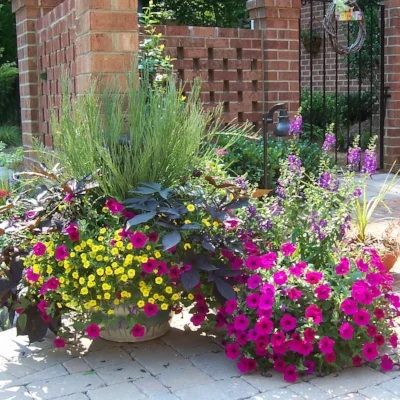When Should you Prune Camellias?
Pruning is a critical aspect of camellia care. The timing and method of pruning depend on the type of camellia and the desired outcome:
As a general rule of thumb, camellias, like most flowering shrubs, should be pruned immediately after blooming. This allows the shrub to form new growth and flower buds before the next bloom cycle. For Camellia japonica (late winter/spring blooming), this usually means mid-to-late spring and late fall through late spring for fall-blooming sasanqua Camellias. However, if you are more concerned with shaping your camellia and don’t mind losing some flowers, you can prune them any time of year. If you enjoy using camellias as cut flowers, you can even prune them as you harvest the blooms. Regardless of the time of year, you should remove any dead, damaged, or diseased growth as soon as you notice it.
Both types of camellia can develop long, straight shoots in summer that can pruned with little loss of flowers since this type of rapidly growing, thin branch typically doesn't form buds. This video shows what these summer shoots look like.
Prune your Camellias using any of the basic pruning cuts. Thinning cuts remove entire branch sections back to a main branch, allowing light and air circulation to surrounding branches. Heading cuts remove a portion of the stem at some point between the beginning of the branch and the tip and are used to encourage multiple branches to develop near the cut, making the plant bushier. Pinching, which removes just the new growth at the tip, is usually reserved for very young camellia plants to help shape them.
Overgrown camellias can be renovated in a few years in two steps. In the first year, remove lower limbs, leaving the top third of the shrub intact. Over the growing season, the trunk will sprout new growth. The following year, reduce the crown to the desired height. Fertilize well with an acid-plant fertilizer like HollyTone after pruning to encourage healthy growth.
More about Camellias
With their glossy evergreen leaves and sumptuous flowers, Camellias have a storied history that traces back to ancient civilizations in Asia. Initially found in the forests of China and Japan, camellias were cultivated for thousands of years for their beauty and practical uses. Tea, for example, is made from the leaves of Camellia sinensis, underscoring the plant's integral role in daily life.
The journey of camellias from East to West is a testament to the shrub's enduring appeal. European explorers in the 17th and 18th centuries were captivated by the exotic beauty of camellias. They brought them back to Europe, quickly becoming symbols of wealth and sophistication in aristocratic gardens. The Victorians, renowned for their love of ornamental gardening, embraced the camellia, further cementing its status as a garden classic.
Camellias thrive in partially shaded areas, shielded from the harsh afternoon sun, in well-drained, slightly acidic soil. When planting, it's crucial to ensure that the top of the root ball is slightly above ground level to avoid waterlogging. Mulching helps retain moisture and keep roots cool.
Regular watering is essential, especially during dry spells, to keep the soil moist but not soggy. Camellias benefit from fertilization in spring and mid-summer with an acid-plant fertilizer, such as HollyTone, to promote vibrant blooms and healthy growth.
Camellias are relatively trouble-free but occasionally susceptible to pests like aphids and diseases like camellia leaf gall. Regular inspection and prompt removal of affected parts are crucial. Fungicides and insecticides may be used according to label instructions when necessary.
Camellias have a beauty that has captivated gardeners across centuries. With proper care, including timely pruning and adequate nutrition, camellias can be a stunning addition to any garden, providing a lush display of flowers year after year. Whether you are a seasoned gardener or a novice eager to bring a touch of elegance to your outdoor space, understanding Camellias' rich history and care requirements can lead to successful and rewarding cultivation.





















